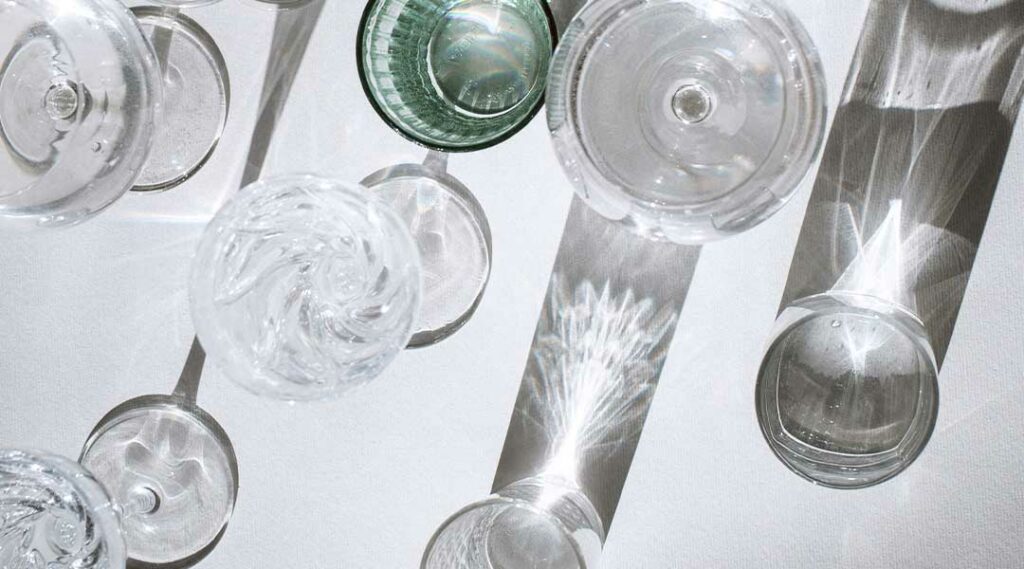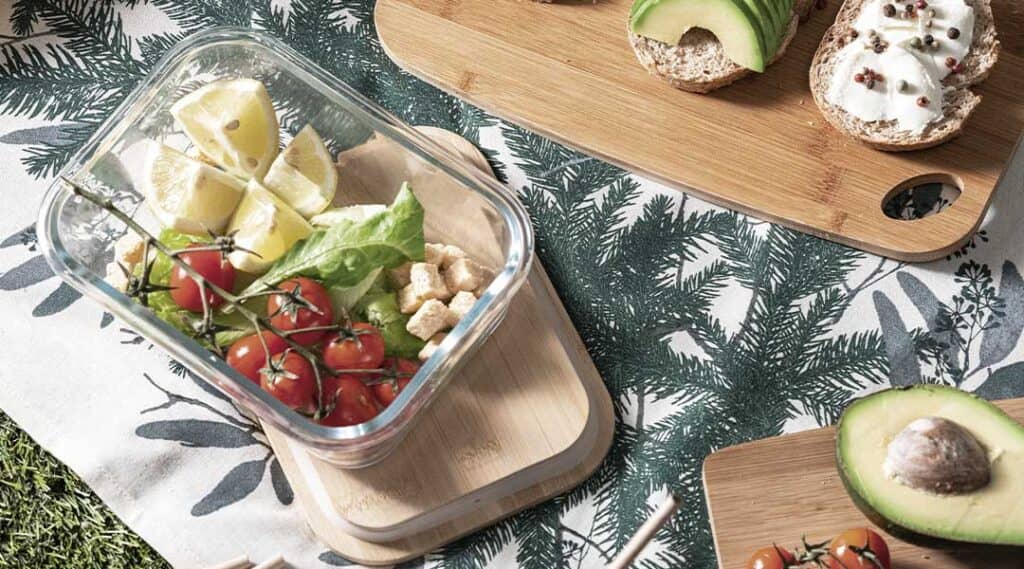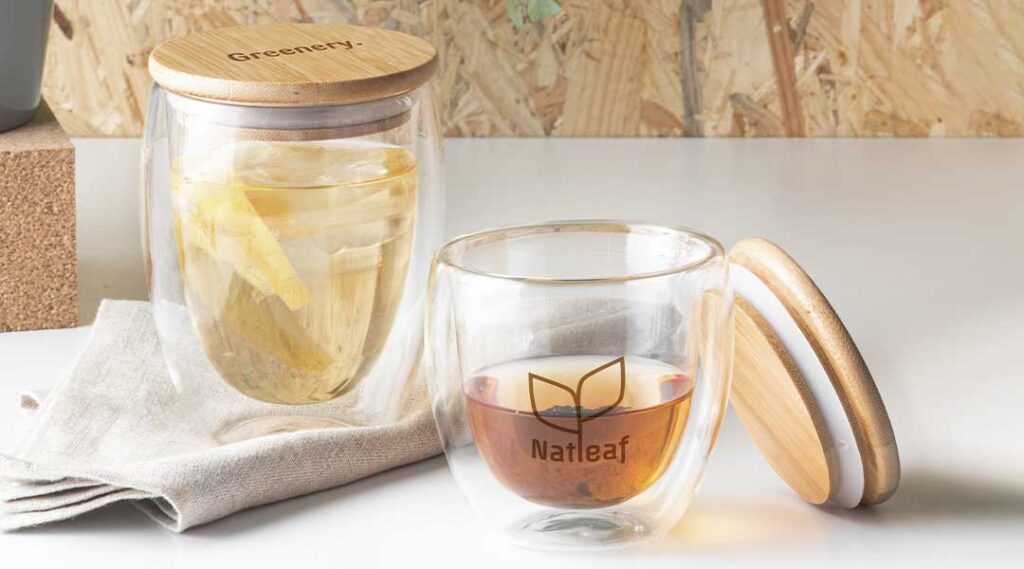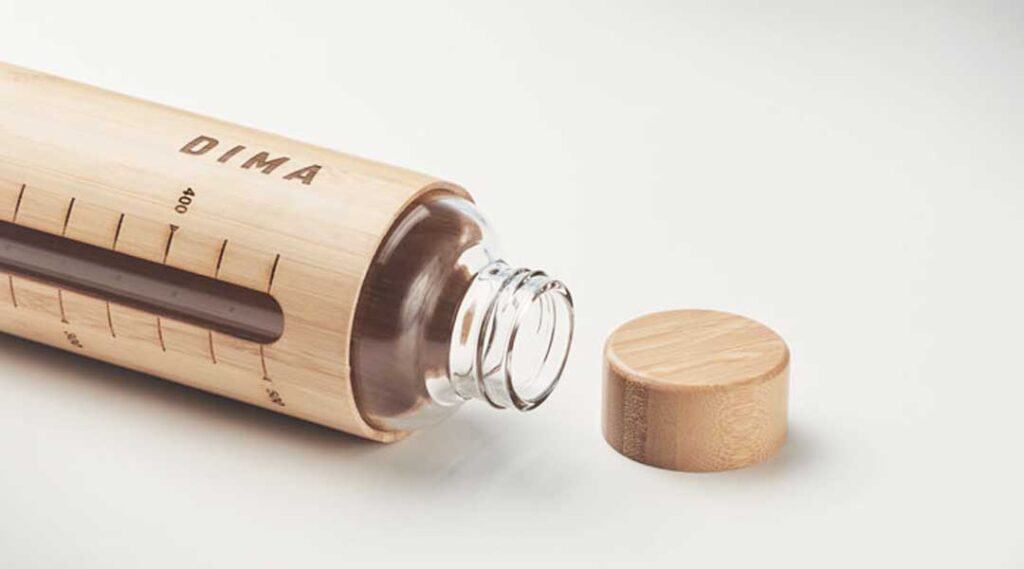
Glass is a material obtained from sand as it has a component called silica which is combined with sodium carbonate and limestone. They are then melted in a furnace at a very high temperature (around 1500ºC), producing a paste which is then shaped.
As it is a versatile material, there are different variants and, thanks to certain elements, it is possible to create different coloured glass. Before diving into this fashionable new material for containers, it is useful to know how the materials differ:
Difference between crystal and glass
It is common to think that crystal and glass are the same or that the former is made from the latter, but this is not the case.
The difference between crystal and glass is that the former is found in nature (in the form of quartz or rocks) while the latter is man-made.
At first glance, it is very difficult to distinguish between the two, as their composition is similar. Glass is more commonly used for bottles, glasses, lunch boxes and other tableware, while crystal is usually used in light bulbs or fluorescent bulbs.
Now that we know this, it is time to talk about borosilicate glass.
Borosilicate glass
Borosilicate glass is very similar to ordinary glass, but it stands out for its durability and chemical and heat resistance. It is therefore perfect for use in laboratory utensils as well as kitchen utensils.
It was created by the German chemist Otto Schott, founder of Schott AG in 1893, who named it ‘Duran’. It was primarily intended for pharmaceutical uses (chemistry equipment). Twenty-two years later, however, American Corning Incorporated, an American company producing glass, ceramics and similar materials, began to market borosilicate glass under the Pyrex brand name.
If we mention the Pyrex brand name, you probably know it or are very familiar with it. This is because they are very famous for this material, used in dishes, trays and lunch boxes, among others. It is also known for its resistance to thermal shock, its lightness and its low coefficient of expansion (40% compared to ordinary glass).
The peculiarity of borosilicate glass lies in its composition: a mixture of elements similar to that of common glass from which, however, lead is totally excluded without losing transparency or shine.
Advantages of using borosilicate glass
• It resists heat and temperature changes and has a low coefficient of expansion.
• The qualities of chemical inertness, transparency and heat resistance make it ideal for use as a cookware material in traditional ovens or microwave ovens.
• Being non-porous, it is totally hygienic (it does not retain bacteria) and it is possible to cook any food with it regardless of the degree of acidity.
• Easy to clean, even with neutral detergents.
• It is excellent for food storage. In fact, the containers can be transferred from the freezer to the microwave without any problems.
• Does not alter the taste of the food it contains.
• As it is transparent, it allows you to see the food during cooking.
• It does not contain substances potentially harmful to humans as it is made up of natural components, such as silica and sodium and calcium oxides, which have no negative effects on health.
• It is fully reusable and sterilisable.
• It is 100% recyclable.
Promotional products made of borosilicate glass
Promotional lunch boxes
With the hectic pace of modern life, there is less and less time to spend on cooking, especially during the week. Of course, it is not possible to rely on home delivery services either, as this would be very expensive. Therefore, it is very common to cook a few days in advance and save the food to take to work. Hence, giving promotional lunch boxes made of borosilicate glass is one of the preferred options for employees.

Promotional glasses
Borosilicate glass cups usually have a double wall, which makes them more resistant than conventional glass cups, and also adds elegance and style to them. They can also withstand higher temperatures and can therefore be used for hot drinks, such as tea or infusions. Not to mention that, because they are transparent, you get a nice visual effect because you can see the colours of the drink in them: imagine an elaborate cocktail: it wouldn’t be the same in an opaque plastic glass. They are perfect for a bar that can personalise them with its own name and serve hot or cold drinks in style.

Reusable bottles
As previously mentioned, borosilicate glass retains flavour better. Therefore, having reusable bottles made of this material to have on hand to drink water or whatever you want is a great option. In addition, many of them have a non-slip protective sleeve, providing extra protection and allowing for a touch of colour to align with the company’s image.

So much for our explanation of this material. Now we want to read from you: are your containers made of borosilicate glass? Why do you prefer to use borosilicate glass as opposed to conventional glass? Leave us your comments below!